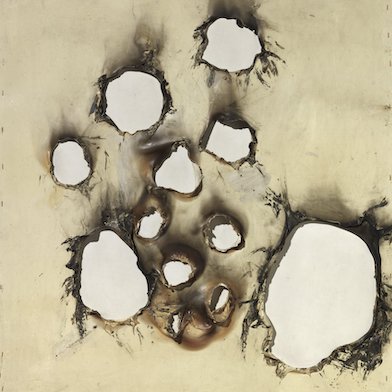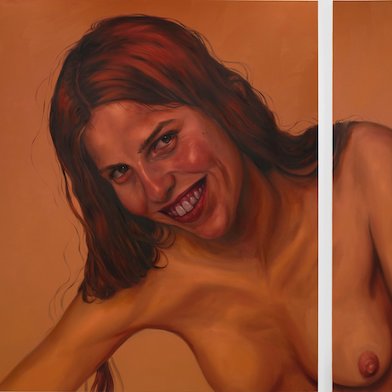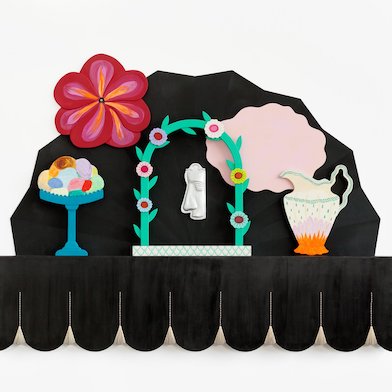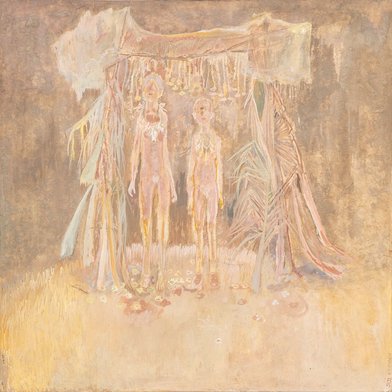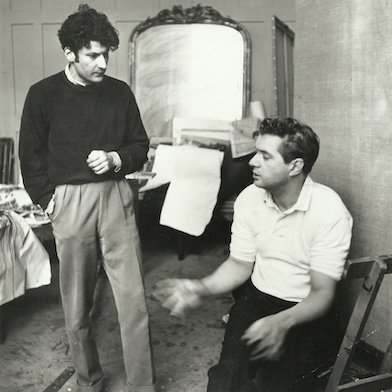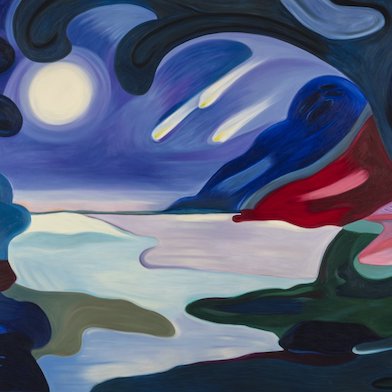Open: Thu-Sat 12-6pm
Visit
Jenny Michel: Leaves of Eden - Leaving Eden
FeldbuschWiesnerRudolph, Berlin
Fri 9 Aug 2019 to Sat 7 Sep 2019
Jägerstrasse 5, 10117 Berlin Jenny Michel: Leaves of Eden - Leaving Eden
Thu-Sat 12-6pm
Artist: Jenny Michel
In Leaves of Eden - Leaving Eden, Jenny Michel creates stories of a postanthropocentric age in which the manifold relationships of various forms of existence are renegotiated. The drawings, collages and texts of the exhibition form a system of references that unfolds organically and scans this world in ever new ways. In her enigmatic and poetic drawings, collages, and installations, universes are designed that grow, collapse, and connect into ever new units.
In her fourth solo exhibition at FeldbuschWiesnerRudolph Gallery, the artist works with densely laid out, fragile pencil drawings that organically network with collaged pictorial elements.
Jenny Michel's work can be read like a rhizome - a subterranean network of roots and at the same time a metaphor of postmodern world description - that allows only a small part of her complex thought world to become visible on the surface.
Interview
Celina Basra in conversation with Jenny Michel
The eternal striving of man for paradise is an ongoing topic in your work. How can we decipher the title of the exhibition Leaves of Eden - Leaving Eden?
The title is a short form of Leaves from the Garden Eden, a Hebrew mythological term based on the topos of medicinal herbs. Leaves of Eden - Leaving Eden could refer to humanity, to the Lost Paradise and the idea of a departure, a journey. The Leaves of Eden could be alternative forms of existence that have escaped Paradise and taken a different evolutionary path - perhaps individual cell communities forming an immortal superorganism. Plants with undreamt-of abilities that combine with technology and inhabit a whole new world - in another dimension or in the future. Leaves of Eden are the smallest building blocks of life in this narrative, which can inform the world again and again, even after its supposed end, and can bring new forms of existence to life again and again. Nature is Data - Data is Nature. This thought runs through my work.
You show new drawings from the Leaves of Eden series, as well as collages from the Exit series. Escape and rescue are the themes of our time. For Exit you combine escape and rescue plans of different buildings - what was your impulse behind this gesture?
The Exit collages are an antithesis to the organic, airy drawings of the Leaves of Eden. Martial in red and black, escape and rescue plans pile up to form architectural structures, interweave to form labyrinthine impenetrable structures or crystalline grids. The works span an arc from the control mania of our society, where everything is thoroughly organized, to escape thoughts and longings for a better world, as they are offered in utopias. In the gallery, these collages also structure the exhibition space like a system of paths.
I'm thinking of a poem by Richard Brautigan, All Watched Over by Machines of Loving Grace, "I like to think (it has to be!) / of a cybernetic ecology / where we are free of our labors / and joined back to nature / returned to our mammal / brothers and sisters / and all watched over / by machines of loving grace.''
The poem has an amazing topicality. In the book I am currently reading, Staying with the trouble - Making Kin in the Chthulucene (2018) by Donna Haraway, related themes are dealt with, such as the confrontation with being human, the kinship of species, and the question of how we can live together in a post-anthropocentric age. I have also studied intensively another text by Richard Brautigan, the utopian novel In Watermelon Sugar (1968), set in a post-apocalyptic world, describes a society that lives in apparent harmony with the outside world, but is disturbing on closer inspection - and is perplexed by the legacies of an earlier civilization (perhaps ours). Elements from this novel - such as the term Forgotten Works - I combine in these new works with my own thoughts and associations.
In addition to these texts, there are two books that are important references for the exhibition: Vampirotheutis Infernalis by Villem Flusser (1987) and Thousand Plateaus by Deleuze/Guattari (1980). Both treatises deal with the basic conditions of our existence and our thinking, with localizations, cartographies and the sovereignty of interpretation over sign systems.
The concept of the rhizome seems to characterize your complete works aptly: You think in different multiplicities and comprehensive contexts. Each individual work and each thought are connected with the others in an infinite number of network lines. Each work seems to be laid out in the other as a seed or ramification.
In addition to the space that my works span - from the drawing sheet to the exhibition space - there is the space of thought in which I move. Both spaces penetrate each other. Deleuzes/Guattari's notion of rhizome plays just as much a role as their thoughts on smooth and notched spaces. I actually understand my work as a kind of rhizome: as an information cosmos whose parts are networked in complex systems and from which "small", visible works come to the surface like mushrooms. Each work can be understood as the condensation core of a potential network of thoughts.
These relationships can be broken up and combined again and again. Everything one sees is the prelude to a larger narrative. The terminology of smooth and notched space goes back to early measurements: previously smooth spaces were staked out by notches and power structures were consolidated. This territorialization of space corresponds to a similar territorialization of thought. The notching becomes a self-evident, quasi-natural representation of the world.
In my works I try to dissolve these (dominant) representations. I approach the topic playfully by categorizing dust, for example, or by writing instructions for filling paradise with dust - or, as in the works shown, by taking various systems of signs and grids to absurdity. The world of Leaves of Eden that I design could be a world of smooth spaces - where everything is connected to everything in a non-hierarchical way.
